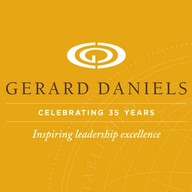When differing perspectives and opinions are poorly managed in work environments, or when emotions are not respected, well considered and facilitated, conflict quite often occurs. If conflict is then left to escalate or fester it can have a significant negative effect on an organisation, it’s performance, relationships, culture, and reputation.
However, when diverse views and even conflict is effectively facilitated, it can feed into robust discussion, rigorous decision-making processes, innovation and problem resolution and strong organisational performance.
Here Barry Bloch (Global Partner for Board and Executive Leadership) delves into:
- Why workplace conflict can’t be ignored
- The benefits of intentionally harnessing and proactively managing differences, and
- Best practice for organisational conflict resolution.
Fight, flight, fright vs. choice and intentionality
Before we get into workplace conflict resolution, it helps to understand conflict from a psychological perspective.
“Early humans had just three mechanisms for addressing risk and threat: fight, flight, or fright – often euphemistically called the ‘amygdala hijack’,” Barry explains. “As modern humans we still have these emotional responses to perceived or real risk and threat. However, as humans we have the significant advantage (when responding to risk and threat - including potential or actual conflict), to add choice and intentionality to our behavioural equation.”
“What this means is that we now have the skills to be able to choose not to revert to fight - flight - fright and instead to listen to each other, and ultimately to choose how we manage these situations more effectively and intentionally” says Barry. “Having choice lets us respond to and resolve conflict much more effectively than our predecessors ever could.”
What happens when we ignore conflict?
A misconception that Barry frequently encounters, is the belief that conflict can be ignored. “Conflict will not get better on its own, so ignoring it is almost always the least effective strategy,” says Barry. “When you ignore conflict it typically magnifies, the fight – flight - fright responses grow exponentially, and misunderstandings, miscommunications and dysfunctionality kick in. And when communication breaks down you then limit the ability to behave, decide and act together as a team.”
“Almost every day I coach or facilitate leaders on addressing disconnects between team members, or working through disagreements and differences of opinion,” Barry continues. “Unsurprisingly, when we unpack most of these situations, we find unresolved conflict at the core. This applies equally at both the Board and the Executive level, as much as in the wider organisation.”
Are different views and ideas good for business?
Many people assume that conflict naturally happens when you bring diverse viewpoints together, but according to Barry, having diversity of thought and opinion doesn’t necessarily lead to conflict. “Conflict only occurs when our fight – flight - fright response gets in the way of intentional behavioural choice,” he says.
“Having diversity of views is in fact an essential part of innovation, problem solving and decision making, and it almost always produces far better solutions than homogeneity of thought,” Barry continues. “Disagreement, being able to constructively manage diverse views and proactively resolving conflict, are all extremely valuable parts of this process.”
“When conflict is managed effectively it can lead to better accuracy in data transmission and reception, creativity, innovation, and solutions that you won’t find with just a homogenous influence,” he continues. “For this and many more reasons we must view differences not as destroyers of value, but as creators of it.”
How to manage conflict effectively
There are four distinct phases for effective conflict management and resolution.
1. The proactive phase
“Just because you’ve always enjoyed good relationships, doesn’t mean that they will always stay that way, but thankfully potential conflict can be predicted and prepared for by intentionally, transparently, and explicitly performing ‘health checks’ within key relationships and teams,” says Barry.
“By regularly checking in and reflecting on the ‘psychological contract’ between individuals, it becomes much easier to maintain transparency and to know how people are thinking and feeling,” he continues. “To better predict and prevent conflict you must keep communication open, and be comfortable proactively talking about how well you are working together and relating to each other.”
2. Sensing emotion
Conflict happens when the fight-flight-fright emotions hinder our ability to choose how we behave and communicate, so to prevent conflict it’s important to tune into what we sense and feel.
“Our fight - flight - fright mechanism helps us to sense risk and threat, but to move through these situations effectively we must be able to communicate and verbalise what we are experiencing,” says Barry. “We must also acknowledge our own coping and defence mechanisms and be able to intentionally adapt our behaviour to support conflict and problem resolution.”
3. Listening and learning
When conflict does occur and our defence mechanisms do kick in, it’s time to dig a little deeper.
“To move through conflict, we really need to understand what’s going on, what’s triggering the conflict and what’s actually happening between individuals or members of a team,” says Barry. “In this phase, being open about what you’re seeing and hearing and how you’re interpreting and perceiving it, becomes a powerful tool for conflict resolution. ‘Listening loudly’ is an essential leadership and life skill.”
4. Intervention
If you reach the point where your team or organisation can’t resolve a conflict or see a way forward, it may be time for a facilitated intervention. “Doing nothing at this stage is almost guaranteed to fail,” says Barry. “Whether you choose to manage conflict resolution internally or with a specialist facilitator, intervention is about bringing people together to move through conflict, rather than deciding and assigning blame and assigning sweeping generalisations and criticisms to others.”
“The role of experienced, independent facilitators is to keep conversations flowing and moving forward, remembering that while conflict resolution is rarely easy or comfortable, it must always be respectful,” he continues. “Whether our client is the Chair, the CEO, or the entire Board or Executive team, we also try to draw on our experience when needed, to offer ideas and solutions for how clients can move forward.”
Can all workplace conflicts be resolved?
Throughout his career Barry has facilitated numerous, extremely complex conflicts. Yet despite the scale and difficulty of these conflicts, Barry still firmly believes that conflict is almost always solvable.
“I have yet to find a workplace conflict that we couldn’t work through,” he says. “It might take time, it will take effort, and because we are dealing with human emotions it will certainly be complex and uncomfortable, but if conflict resolution follows a well-designed and facilitated process, it will always be improvable.”
Reach out to your local Gerard Daniels team to improve Board effectiveness, top team effectiveness, or discuss coaching and development opportunities for your team.







